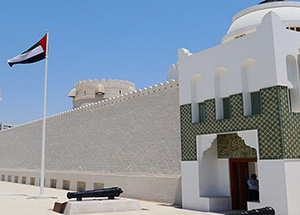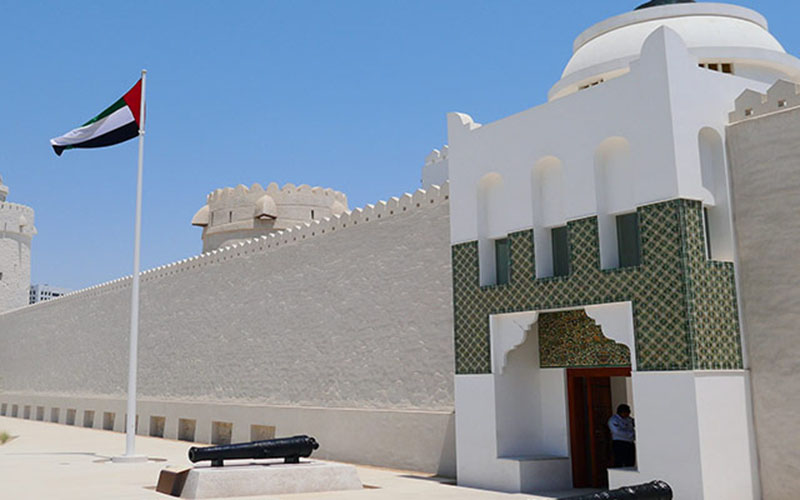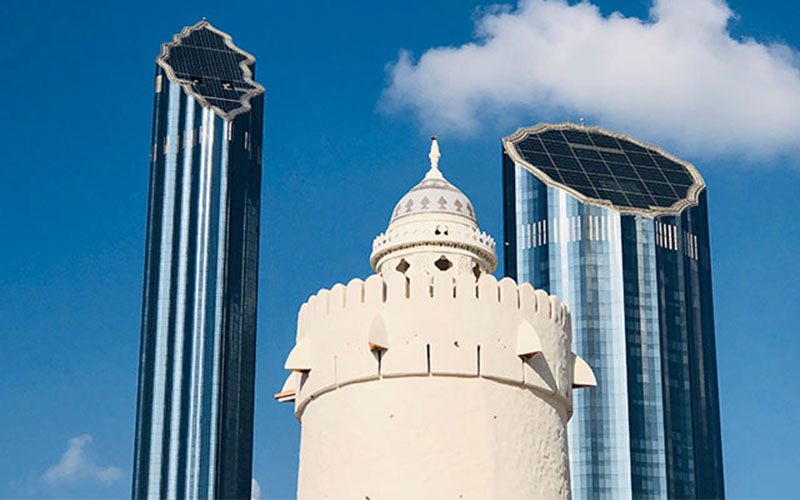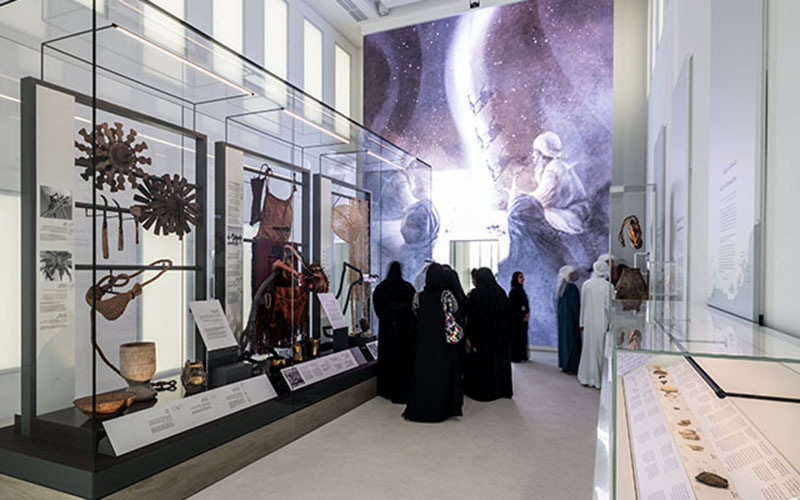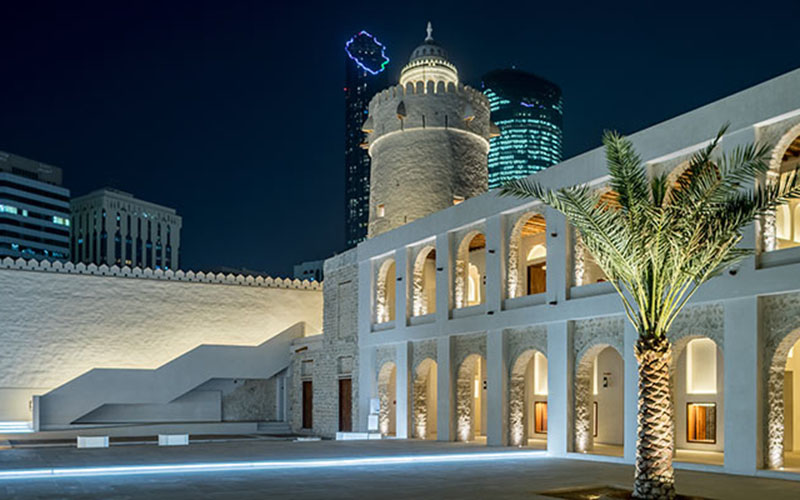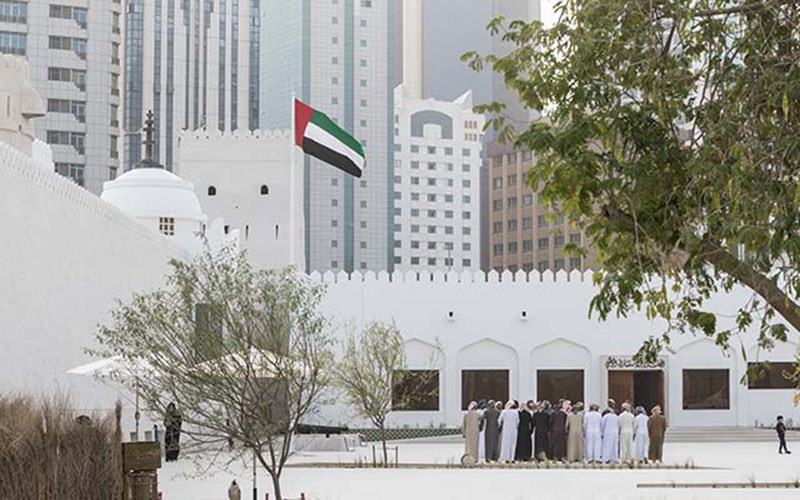Abu Dhabi is the capital city of the UAE and is one of the most visited places in the region. It boasts of rich culture and history and is home to many heritage sites. Qasr Al Hosn is one of the iconic places to visit in Abu Dhabi that represents the bygone era.
Qasr Al Hosn Abu Dhabi
was once home to the ruling family for many centuries. It later became the seat of government, a consultative council, and a national archive. It is one of the oldest and most important buildings in Abu Dhabi. It houses one of the first permanent structures in the city: the iconic watchtower.
The Watchtower and Fortress
Constructed around the 1790s, this magnificent structure commanded over coastal trade routes and safeguarded the island settlements. It underwent elaborate restoration and conservation work for 11 years. Converted into a museum in 2018, it is now a national monument that is a tribute to the rapid transformation and growth of Abu Dhabi from a town that relied on fishing and pearling in the past, to the present day state-of-the-art, global metropolis. The stunning watchtower overlooks the see and is a prominent landmark of old Abu Dhabi.
Sheikh Shakhbut Bin Dhiyab ordered the construction of more towers, during his reign between 1793 to 1816. These towers were linked to create an imposing defensive enclosure that commanded nearby shipping routes. During this time the fort was used as his seat of government, military headquarters, and his family home.
Qasr Al Hosn was named “Hosn Abu Dhabi” which translates to Abu Dhabi Fort. Since its commencement, only those who control the walls of the fort proclaim their right to rule. The current ruling Al Nayan family have brought about an enormous change in the lives of the residents through constant work, commitment and vision.
In 1939, after Sheikh Shakhbut Bin Sultan Al Nahyan negotiated the country’s first oil concessions with Great Britain, Qasr Al Hosn once again became a ground for a glorious economic change in Abu Dhabi. The magnificent palace that enclosed the walls of the fort was built later. The decorative arch outside Qasr Al Hosn gates was added as part of the renovation in 1950s.
Attractions: One of the best things to do in Abu Dhabi is dive into the history of Emirati. The Qasr Al Hosn consists of the House of Artisans and Cultural Foundation. The museum displays artifacts, pictures, and other materials that date back to as far as 6000 BC. It also exhibits a range of weapons that were used in the past.
House of Artisans is the main center for the celebration, conservation, and advancement of artisans and the promotion of the heritage of Abu Dhabi. It gives you an insight into different kinds of traditional Emirati crafts such as:
Khoos: Household products such as basket with lids, table mats, hand-held fans, etc. are made with branches, leaves, and fronds of the date palm tree. This is an art that has been an integral part of Emirati life for generations.
Talli: This is a creative skill wherein cotton and silk are used to create artistic embroidery on traditional garments. Golden and silver threads are mostly used to make embroidery in the sleeves, collars, and hems of garments. It is a comprehensive process and this art is passed on from one generation to another.
Al Sadu: This is a weaving method used by Bedouin women in the early days. Animal wool is used to create striking garments in geometrical patterns. Apart from clothing, they also created bait al-sha’ar, which is a form of tent to protect their families from the intensely hot weather, and also camel straps and saddles.
A lot of effort is put into the betterment and safeguarding of traditional Emirati crafts and arts, through various channels such as educational demonstrations and workshops, training courses, and public events.
Qasr Al Hosn attractions include cultural performances such as dance shows, musicals, falconry demonstrations, poetry, etc. and there is also a change of guards ceremony. Weekends are especially jam-packed with an array of cultural, social, and artistic performances and activities. You can interact with local fishermen, savor authentic Emirati food, and stroll through a traditional market where you can purchase garments, antiques, organic vegetables and fruits, and much more. It is an ideal way for individuals and families to spend their weekends.
Bait Al Gahwa
Enjoy this unique experience at the House of Artisans. An initiative by Abu Dhabi’s Department of Culture and Tourism, Bait Al Gahwa is a cultural experience that gives you a detailed account of how Gahwa or Arabic coffee is prepared and served.Serving Gahwa has been integral to the Emirati hospitality since centuries.
With Bait Al Gahwa, you’ll get to know the authentic method of preparing Gahwa using techniques that have been passed on from one generation to another. There is a small Majlis-like room where floor cushions are set up. You can sit back and enjoy the ritual and witness the important steps such as roasting the beans, cooling, grounding, and brewing that go into making this delicious coffee. Each stage of making and serving coffee has a special technique, exclusive etiquette and traditional tools involved.
If you want to take a closer look at the vivid culture and history of the city, explore the Louvre Abu Dhabi guide.
Qasr Al Hosn Festival
Qasr Al Hosn Festival is one of the most glorious occasions in Abu Dhabi. It is visited by thousands of tourists every year and has been celebrated for the past 250 years. Held in the Qasr Al Hosn Square, it gives a sneak peek into the rich legacy of Abu Dhabi as well as the culture and tradition of this wonderful city. Performers honor the influence of Abu Dhabi on a global scale.
The following is a list of activities that are held on a daily, weekly, or monthly basis.
- Guards opening ceremony (9:00 am – 9:10 am)
- Guards March (4:00 pm – 4:10 pm)
- Guards Closing Ceremony (6:50 pm – 7:00 pm)
- Al Ayyala, which is a Performance of valor, music, poetry and more (10:00 am – 1:00 pm)
- Al-Taghrooda which is Poetry in the form of a song (10:00 am – 1:00 pm)
- Demonstrations of Marine Tradition (5:00 pm – 6:00 pm)
- AlRazfa which is a Dance of Unity (10:00 am – 1:00 pm)
- Falcon show which is UAE’s National Emblem (5:00 pm – 6:00 pm)
You can check the monthly calendar on their website to get a detailed list of events and activities.
Guide:
This serves as a perfect visitor’s guide to Qasr Al Hosn.
It is divided into two main sections: the outer palace and the inner fortress. The inner fort was constructed way back in 1795, while the outer palace was built in the 1940s. All the state businesses took place in the internal fortress. If you are a history buff, a visit to Sheikh Shakhbout bin Sultan Al Nahyan Wing is something you will immensely enjoy.
Visitors are acquainted with the cultural heritage of the UAE through a series of documentaries, interactive presentations, and visual aids, which are played in the exhibition halls of Qasr Al Hosn. You can also get interesting information and facts about the policies and major historical decisions of this region.
Timings:
Qasr Al Hosn timings are as follows:
Saturday to Thursday: 9 am to 7 pm
Friday: 12 pm to 10 pm
Tickets:
The tickets for Qasr Al Hosn for general admission are:
AED 30 for adults (12 years and above)
AED 15 for children
General admission to House of Artisans and landscape is complimentary. It includes access to Qasr Al Hosn Palace and the daily program of activities. You can book tickets online in advance or purchase them at the site.
There are packages for school admission and group admission too. Large groups are even offered a discount at the time of booking.
Tips & More:
The following tips will be useful when you visit Qasr Al Hosn.
- Private group tours and guided tours are available at the museum.
- You can download the Abu Dhabi Culture app to enjoy audio and augmented reality experiences at Qasr Al Hosn
Complimentary Wi-Fi is provided to all the visitors across the Al Hosn cultural site. - There are no locker facilities available. So, all personal belongings should be carried by the visitors at all times.
Qasr Al Hosn is located at Sheikh Rashid Bin Saeed Al Maktoum Road. Landmarks such as Etisalat Headquarters and the World Trade Centre are nearby. It is accessible from Abu Dhabi International Airport, Dubai and Al Ain.
- Hamdan St / Al Hosn Palace is 147 meters away and approximately a 2 min walk.
- Hamdan St / New York University is 362 meters away and approximately a 5 min walk.
- Khaled Bin Al Waleed St / Al Hosn Palace is 364 meters away and around a 5 min walk.
- Shk Rashid Bin Saeed St / Hamdan St is 383 meters away and around a 6 min walk.
- Zayed 1st St / Abu Dhabi Cultural Foundation is 680 meters away and approximately a 9 min walk.
- The bus lines that stop near Qasr Al Hosn Cultural Quarter are 32, 40, and 54.
FAQs
Q1. What is Qasr Al Hosn?
Qasr Al Hosn is a historic palace and fort located in the city of Abu Dhabi in the United Arab Emirates. It was built during the 18th century as a watchtower to protect the city’s only freshwater well.
Q2. What can visitors see at Qasr Al Hosn?
Visitors to Qasr Al Hosn can see the restored palace and fort, which includes exhibitions on the history and culture of Abu Dhabi and the United Arab Emirates. There are also guided tours of the site, as well as cultural events and activities.
Q3. Is there a dress code for visiting Qasr Al Hosn?
Visitors should dress modestly when visiting Qasr Al Hosn, with clothing that covers the shoulders and knees. Shorts, short skirts, & sleeveless tops are not allowed.
Q4. Is photography allowed inside Qasr Al Hosn?
Photography is allowed inside Qasr Al Hosn, but visitors are asked to be respectful of the site and not to use flash photography. Commercial photography and filming require prior permission.
Q5. How much does it cost to visit Qasr Al Hosn?
General admission to Qasr Al Hosn costs AED 30 for adults and AED 15 for children aged 6 to 11. Children under the age of 6 can enter for free. There are special rates too for students and senior citizens.
Conclusion
Qasr Al Hosn takes you back to the bygone days of Abu Dhabi. It gives you a glimpse of what life was like during the early days.Qasr Al Hosn is an authentic symbol of old Abu Dhabi. A visit here allows you to discover some treasured displays, depicting the region’s age-old culture and traditions. On the flip side, travelers can go for an epic adventure by checking out Clymb Abu Dhabi activities or enjoy a day out at the Middle East’s largest aquarium, Al Qana National Aquarium Abu Dhabi.
